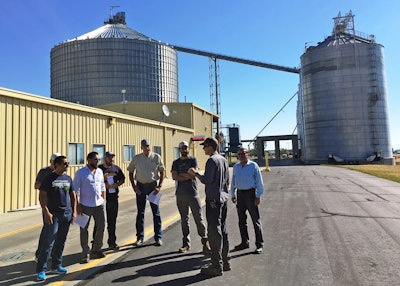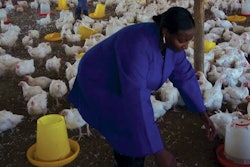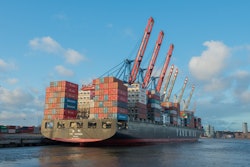
Inattention, indifference and inaction are no longer options for those in agriculture with regard to our nation’s foreign policy. Just as producers must watch daily their weather, crop conditions and commodity prices, so too must they track policy developments around the world that will make or break the markets for the bountiful crops they are so efficient at producing.
Free trade has remained a key, philosophical driver for U.S. feed grains for decades, benefiting corn, barley and sorghum growers — among many other commodities. Now, agriculture must answer the call to defend trade and the rewards reaped from free tradedriven policies.
When trade works, the world wins Simply put: When trade works, everyone wins. Exports of feed grains in all forms to the 20 countries with which the United States has a free trade agreement have increased by nearly 24% over the last 10 marketing years (2006/2007 to 2015/2016), according to U.S. Department of Agriculture (USDA) trade data and analysis by the U.S. Grains Council (USGC).
Free trade agreement partners now represent 49% of total U.S. exports of feed grains in all forms. In terms of quantity, the spread between exports to partners compared to nonpartners (excluding China) has shifted dramatically from a negative 2.8 million metric tons in 2006/2007 to a positive 12.7 million tons in 2015/2016.
In no other case has the benefit of open trade been more apparent than in our relationship with Canada and Mexico through the North American Free Trade Agreement (NAFTA). NAFTA provided the trade policy underpinnings that resulted in the most efficient and effective interregional grain and livestock value chain in the world.
The provisions in NAFTA complement the natural geographic advantages of close proximity. As a result, agricultural trade between the United States, Canada and Mexico occur duty-free, and trade has grown increasingly more integrated.
Mexico was the largest export market for U.S. corn in the last full marketing year, purchasing 13.3 million tons (524.4 million bushels), in addition to 606,127 tons (23.86 million bushels) of sorghum, 115,000 tons (5.3 million bushels) of barley and 1.9 million tons of distillers dried grains with solubles (DDGS). In all, these exports were valued at $2.97 billion.
Our trade agreements have also been a good deal for our trading partners who have invested significantly in expanding their own feed, livestock and transportation industries while relying on the U.S. coarse grains industry. For example, a group of livestock producers in the Yucatan Peninsula who join their resources to purchase bulk shipments can receive a ship from U.S. ports in the Gulf in 40 hours, substantially faster than from any other competitor.
This cycle of increasing sales and then expanding operations results in even more demand for U.S. feed grains and co-products. And as existing endusers advance to more sophisticated buyers, the Council can expand efforts to assist underdeveloped sectors like conducting DDGS trials with livestock producers in northeastern Mexico. This overall effect is a win-win scenario on both sides of the border.
Strong markets not guaranteed
As the 2016/2017 marketing year for sorghum and corn draws to a close on Aug. 31, export sales to trading partners like the ones mentioned above have helped support a difficult market for U.S. farmers, driven by prices, yields and market development work by organizations like the Council to maintain long-time trading partners and find new areas of near-term demand.
We should celebrate this success. Exports of U.S. feed grains in all forms (GIAF) are up 20% year-over-year from September to June, reaching 96.9 million tons, according to USDA data and USGC analysis.
Yet, after congratulating ourselves on opportunities seized, we must recognize the continuation of this year’s strong export pace is not guaranteed. As the current marketing year ends and the new one begins, the Council’s work on market access, technical education and trade servicing will be increasingly important to secure U.S. market share.
Free trade is under threat
At the same time, the basic tenets of free trade are now up for debate in the United States. The upheaval of this philosophy is forcing U.S. agriculture into a defensive mode while challenging efforts for U.S. feed grains and co-products to continue expanding into markets old and new. We all must engage to help achieve conclusions in our trade negotiations that provide us and our customer’s long-term certainty and create a new platform for growth and integration of our regional and feed and fuel industries. This need extends far past one or two existing trade agreements and into the future of trade in developing markets around the world.
Of course, modernizing or examining the provisions within trade agreements is good business. But we must recognize agriculture is a traditional target for retaliation in trade disruptions, a clear and present danger. "Do no harm” for U.S. feed grains and co-products means avoiding these retaliatory measures at all costs. As a result, members of the grain and feed industries must monitor trade policy negotiations in any sector with a careful eye. Farmers, members of the agriculture supply chain and negotiators alike must understand how important our markets — and trade — are to agriculture’s profitability.
While we fall behind, others move forward
While we defend and demonstrate the mutually beneficial trading relationships we have built to domestic audiences, our competitors are making their own good deals and eroding our competitive advantages.
Our largest and most loyal customers are at risk of taking their business elsewhere. In Mexico, that consideration is called “Plan B” and simply means reducing dependence on the United States as a supplier of food and agricultural products.
Even seemingly small shifts in operations could have large impacts on U.S. exports. In Mexico, feed millers and livestock producers are building more storage so they can move away from the “just-in-time” inventory management system established on the prerequisite of a reliable U.S. supply. Political uncertainty is driving these decisions. And as the industry knows, their own shiny, new bins mean less reliance on a single supplier and a greater ability to competitively source or sell, eroding the U.S. advantage in one of our largest markets.
Make no mistake — our competitors are doing more than watching. Japan inked an agreement with the European Union within weeks of the U.S. withdrawal from the Trans-Pacific Partnership (TPP) that offers the same agricultural access U.S. negotiators spent years developing. At the same time, the remaining 11 countries in TPP continue to proceed with negotiations. All while the United States is left out.
The next round of negotiations for a free trade agreement between the European Union and the four Mercosur countries (Argentina, Brazil, Paraguay and Uruguay) kicks off in September with a mutual agreement to have a formal agreement by 2018, which would further intensify competition for the United States from Brazil.
And Mexico, Peru, Chile and Colombia announced in June the intent to start negotiations for a separate agreement with New Zealand, Australia and Singapore.
Trade agreements are the key to opening markets and resolving tariff and nontariff barriers to allow the movement of coarse grains and co-products where they are demanded. We pride ourselves on feeding the world, but our inaction has hindered us while our trading partners and competitors alike surge forward. Mexico now has more signed free trade agreements than any other country in the world.
We are no longer the only option for world grain demand. As a result, it is up to all of us in U.S. agriculture to make sure trade liberalization continues at all levels, lest we no longer will be the ones in the race, let alone winning.
Agriculture must speak up
We at the Council are deploying our full market development arsenal. I have personally traveled to Mexico several times this year, along with our full board of directors this past June, and we brought our top customers to the United States to communicate the real and tangible concerns and resultant impacts of this uncertain policy environment. Meanwhile, we are continuing the work we do day in and day out to develop and expand markets across the globe. The sun literally never sets on the Council’s work on behalf of the U.S. ag industry.
The U.S. grains sector has significantly benefited from more liberalized trade in the past 30 years, and expanding access to export markets will continue to drive the success of American agriculture for years to come.
We in agriculture cannot afford to stay humble, silent observers. All of us are needed to send a strong message to our customers and our competitors that the United States is in the global marketplace to stay. ❚
Tom Sleight serves as the president and chief executive officer (CEO) of the U.S. Grains Council, The U.S. Grains Council develops export markets for U.S. barley, corn, sorghum and related products including distiller’s dried grains with solubles (DDGS) and ethanol. Working in 10 overseas offices and with 30 in-country representatives, the Council operates programs in more than 50 countries and the European Union. More about the Council and its programs is online at www.grains.org.
















